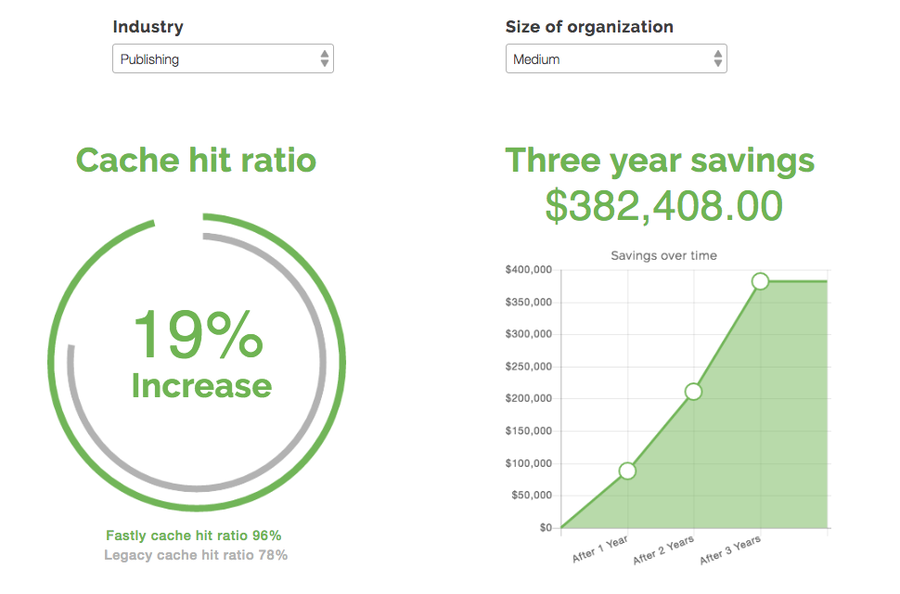Introducing the Fastly savings calculator

VP Strategic Initiatives, Fastly
Our CDN can cache more content than traditional solutions (static as well as rapidly changing, “event-driven” content), offloading traffic that would otherwise go to origin, which allows our customers to save on infrastructure costs. But just how big are these savings? To help answer this question at a glance, we recently launched our savings calculator, which offers quick insight into the savings you can expect as a result of improved cache hit ratios.
Curious visitors can select industry type and size to calculate estimated improved cache hit ratio and three-year savings. For example, a medium-sized publishing organization switching to Fastly can expect to see a 19% improvement in their cache hit ratio, resulting in $382,408 in three-year savings.

In order to arrive at these figures, we make a few assumptions:
The price of cloud instances. For simplicity’s sake, we base our savings on cloud instances you’ll be able to cut as a result of caching more — for our purposes, we’re using Amazon Web Services (AWS), calculating estimated bandwidth costs based on their tiered pricing structure.
Infrastructure requirements for orgs of all sizes. This assumption is based more on AWS bills (see above) than on amount of servers required, as the latter can be imprecise: one customer may have four really small servers, and another a single big one. We did a survey of customers to get a sense of their infrastructure spend, and used these insights to offer a simple way to illustrate how meaningful it is to offload content at the edge.
An annual growth rate of 40%, for all industries, big or small — many of our customers are growing at this rate or faster. After five years of working with customers of all sizes and industries, we’re able to gather unique insight into how businesses grow, and we’re privileged to support well-established organizations and rapidly growing companies who are building the world’s leading technology.
Cache hit ratios based on size and industry. We’re fortunate to have a diverse customer base; that, coupled with discussions and testimonials, gives us unique insight into how cache hit ratios improve after switching from legacy CDNs (for example, BuzzFeed was able to cut their CDN bill by 40% after achieving CHRs of 97-98% with Fastly). Each industry’s content operates on a continuum between static, event-driven, and dynamic content. Ecommerce customers, for example, may have more sensitive content that inevitably goes back to origin (such as customer preferences and payment information), while news sites will cache articles and images at the edge, closest to users (while maintaining the ability to update breaking news in real time).
Head over to our savings calculator to figure out the cost savings you’ll see, and don’t hesitate to reach out with any questions — we look forward to hearing what you think!